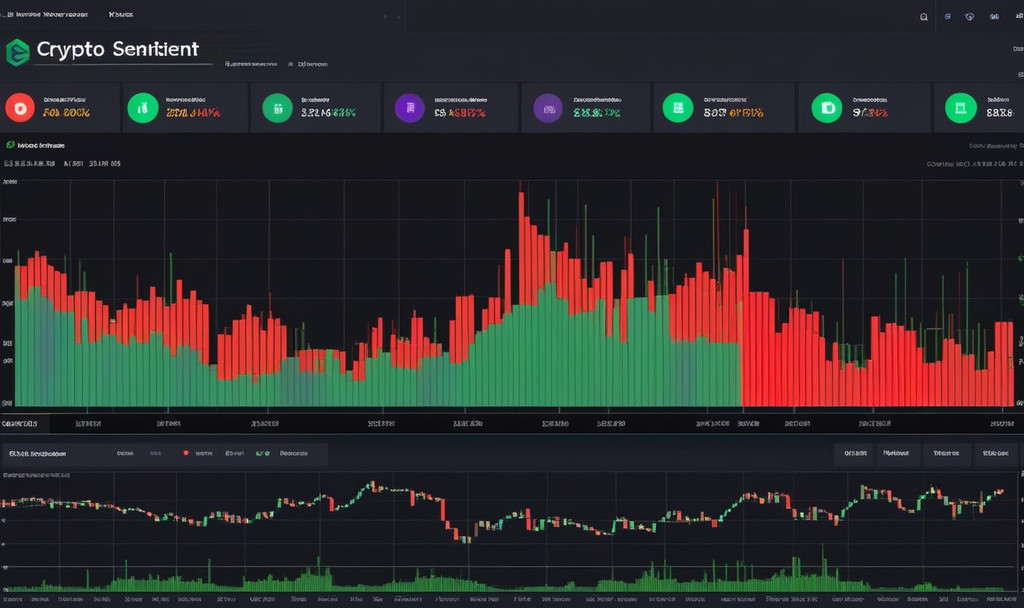The world of cryptocurrency is dynamic and volatile, with prices fluctuating wildly and investor sentiments playing a pivotal role. Traders and investors alike are constantly seeking ways to gain an edge in this fast-paced environment. One such strategy gaining popularity is Market Sentiment Analysis. In this blog post, we will delve into the nuances of gauging sentiment in crypto markets and explore how this analytical approach can provide valuable insights for decision-making.
Understanding Market Sentiment
Before we delve into the mechanics of gauging sentiment, it’s essential to grasp the concept of market sentiment itself. Market sentiment refers to the overall feeling or attitude of market participants towards a particular asset, market, or financial instrument. In the context of cryptocurrencies, sentiment can be influenced by a myriad of factors, including news, social media, regulatory developments, and macroeconomic trends.
The Significance of Gauging Sentiment
Gauging sentiment is crucial because it can provide traders and investors with a qualitative measure of market expectations. Understanding whether the majority of market participants are optimistic or pessimistic can be a valuable tool for making informed decisions. While it’s not a crystal ball, sentiment analysis can serve as an additional data point to complement traditional analytical methods.
Techniques for Sentiment Analysis
1. Natural Language Processing (NLP)
NLP is a branch of artificial intelligence that focuses on the interaction between computers and humans through natural language. In the context of sentiment analysis, NLP algorithms can process and analyze large volumes of textual data, such as news articles, social media posts, and forum discussions, to gauge the prevailing sentiment.
2. Social Media Monitoring
Social media platforms are hubs of information and discussions related to cryptocurrencies. Traders and analysts use tools to monitor sentiment on platforms like Twitter, Reddit, and Telegram. An increase in positive or negative mentions can indicate a shift in sentiment, potentially impacting market movements.
Challenges in Gauging Sentiment
While sentiment analysis can be a powerful tool, it is not without its challenges. False positives, where the sentiment analysis misinterprets information, and the dynamic nature of social media make it challenging to obtain accurate and real-time data. Traders should be aware of these limitations and use sentiment analysis as part of a comprehensive strategy.
Implementing Sentiment Analysis in Trading
1. Intraday Trading Strategies
For day traders, understanding intraday sentiment can be crucial. Real-time sentiment indicators can help traders capitalize on short-term price movements driven by sudden shifts in market sentiment.
2. Long-Term Investment Decisions
Investors with a long-term perspective can also benefit from sentiment analysis. Identifying broader trends in sentiment can aid in making informed decisions about whether to hold, buy, or sell assets over an extended period.
The Role of Transition Words in Sentiment Analysis
While sentiment analysis tools provide valuable data, they are not foolproof. Transitioning from sentiment analysis to trading decisions requires careful consideration of multiple factors. Additionally, it’s crucial to recognize that sentiment alone does not dictate market movements. Therefore, traders should use sentiment analysis as part of a holistic approach to market analysis.
Overcoming Challenges in Sentiment Analysis
1. Machine Learning Improvements
Advancements in machine learning algorithms continue to enhance the accuracy of sentiment analysis. As technology evolves, we can expect more sophisticated models that better understand the nuances of human language and context.
2. Combining Multiple Data Sources
To mitigate the limitations of individual sentiment analysis tools, traders can consider aggregating data from various sources. By combining sentiment data with technical and fundamental analysis, traders can build a more comprehensive understanding of market conditions.
If you have any question about this article, please contact us …
You can easily create a free cryptocurrency wallet with binance …
Conclusion
Gauging sentiment in crypto markets is a valuable skill that can provide traders and investors with a competitive advantage. By leveraging tools like natural language processing and social media monitoring, market participants can gain insights into the prevailing sentiment. However, it’s crucial to approach sentiment analysis with a critical mindset, recognizing its limitations and using it as one piece of the broader analytical puzzle.
In conclusion, the ability to gauge sentiment in crypto markets is a skill that can significantly impact trading outcomes. As the cryptocurrency landscape continues to evolve, incorporating sentiment analysis into your toolkit can be a game-changer. Stay informed, stay analytical, and remember that gauging sentiment is just one aspect of a comprehensive trading strategy.

